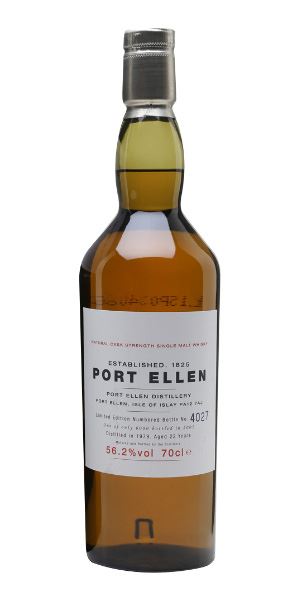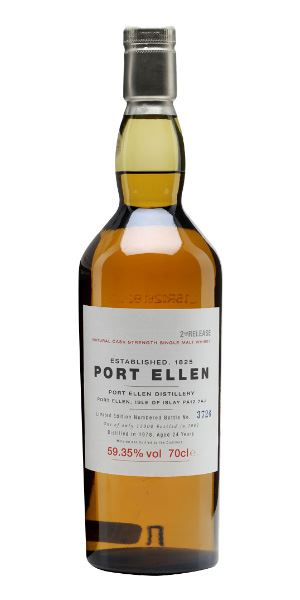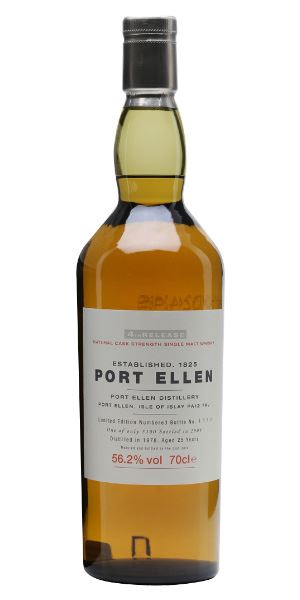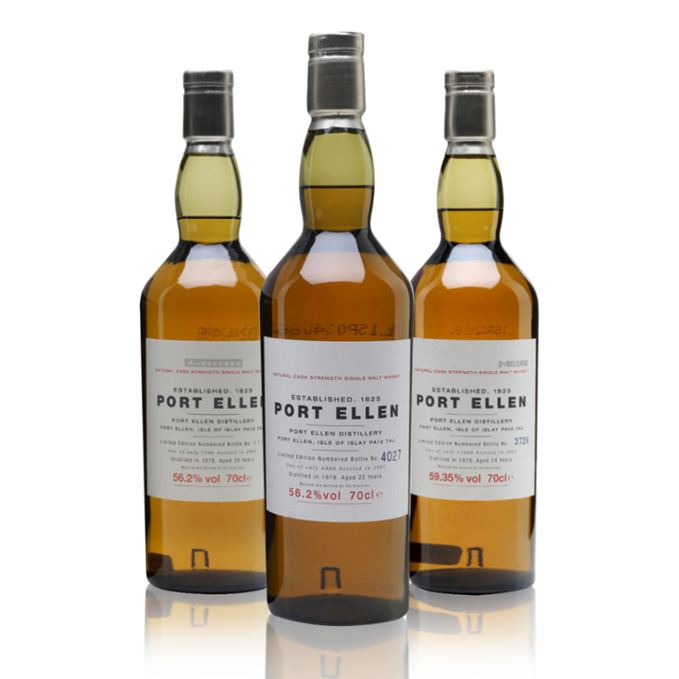-

- Price band
-
£ £ £ £ £
- ABV
- 56.2%
- Production type
- Single malt whisky
- Region
- Islay
- Flavour camp
- Smoky & Peaty
- Nose
Lightly oily, with touches of rubbery wet suit still dripping with sea water; oyster brine, fresh fish counter and then mown damp grass (a churned-up football pitch) and pea pod. When diluted there’s a touch of lanolin, smoked haddock and calamine lotion, though things do remain green and oily.
- Palate
A nodule of sweetness gives way to smoke, which is tinged with medicinal notes, cod liver oil and, oddly, Spangles. Midway through there’s a spray of lemon juice, then green pear and chilli flakes. Water puts a bit more flesh on the bones, but there’s a tension here, as if it’s trying to burst forth. Austere with a herbal touch, some pine sap and an almost gritty quality.
- Finish
Lemon zest and smoke.
- Conclusion
You can’t turn your nose up at a job that involves tasting a flight of whiskies from a legendary distillery. I wanted to do this to try and get my head around Port Ellen’s austere character. Isn’t that rubberiness just a sign of a lack of integration? When is that frostiness a positive character and when is it a lack of development? Here you get the feeling it’s working with one hand tied behind its back. The spirit is working, but the cask is inert.
- Right place, right time
Eating a picnic on the beach in a gale. Sand in the sandwiches.

- Price band
-
£ £ £ £ £
- ABV
- 59.35%
- Production type
- Single malt whisky
- Region
- Islay
- Flavour camp
- Smoky & Peaty
- Nose
Some oak shavings and a tiny whiff of butteriness. The smoke is there, along with orange pith and some pierhead oils, but things generally remain dry and stony – and in need of dilution. This triggers a yeasty element similar to proving sourdough bread. A little standoff-ish. Less smoking fire, more a spent fireplace in a miserly minster’s grate.
- Palate
Bouncy and brisk, with a higher acidity: unripe pear, geranium leaf and the dry, prickly smoke massed up at the back. Dilution releases a tide of salt water and shows a full belly. Texturally interesting, but the acidity starts to dominate on the sides while the smoke continues to lurk. A whisky whose elements are still coming together.
- Finish
Salty. Cold sea. Short.
- Conclusion
Perhaps there’s an element of smoke and mirrors here. Could it be that this whitewashed Wee Free Church quality isn’t distillery character, but actually a lack of interaction due to knackered casks? Are bottlings like this doing the distillery a disservice?
- Right place, right time

- Price band
-
£ £ £ £ £
- ABV
- 56.2%
- Production type
- Single malt whisky
- Region
- Islay
- Flavour camp
- Smoky & Peaty
- Nose
More in line with the first release this time, with touches of wet concrete and a freshly plastered wall. There’s a haunting touch of iris, along with a little medicinal edge, again hinting at potential. It’s in its 20s, but you feel there’s more to come. Once more you get a touch of rubber, a vegetal hit (courgette flower) and, with water, some pickled gherkin and seaweed.
- Palate
Oily and peppery to start. Is this haughtiness covering up shyness? An almost abrasive level of acidity when neat. Water does soften things up, but the spikier elements are still detectable. This would be fine were there more cask elements coming in to balance… but there aren’t. In time, some fruits de mer and smoke.
- Finish
Green, mossy, salty and dry.
- Conclusion
Perhaps I’m missing something, but I can’t help wondering if there’s something of the Emperor’s new clothes about Port Ellen. Is the fact that it’s closed and rare blinding our critical faculties?
- Right place, right time
A Sunday in Stornoway. Take it away, Mr Marra.

As a complete set of Port Ellen annual releases heads to auction next month, Dave Broom revisits three early bottlings that make him question the Islay distillery’s appeal.
A smoky, maritime malt, Port Ellen’s legend has soared in line with the popularity of peated Scotch whiskies, its status as a ‘lost distillery’ (it closed in 1983) driving the desirability of the rare annual bottlings that have emerged since 2001.
The majority of these annual releases have been from refill casks (the 17th edition, released this year, is a vatting of refill American oak hogsheads and butts). It’s this use of old oak in the first, second and fourth releases that has Broom questioning whether Port Ellen might be – whisper it – overrated. Have we been blindsided by its rarity?

